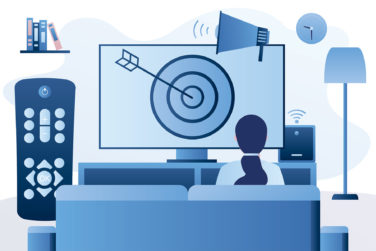In real life, online patient communities pop up organically, sometimes spontaneously, all the time. These destinations are where patients and caregivers go to share their experiences, seek emotional support, give and receive advice. The social media environment currently provides thousands of online outlets for patients across all disease categories, where patients—in ever-increasing numbers—go to discuss healthcare issues.
Conversations on these outlets are unbiased and unfiltered, the type that occur in a natural environment—not in a focus group or during a phone interview. Instead, these conversations offer a true authenticity that cannot be replicated in artificial research environments. Because of that, pharmaceutical companies and their agencies should monitor these patient-to-patient discussions to get a genuine feel for the patient experience around their condition. In fact, it’s imperative. Why? Because it gives your brand (and its competitors) an insight into the real language in which patients actually speak.
When marketers are looking for the deep, qualitative insights on a broad range of issues that can help inform business decisions, they need to engage with patients who meet specific criteria, which can include the disease stage, the current treatment and various demographic specifics. But in conducting social listening studies, the voices we hear—though mostly authentic—are anonymous. So it’s not completely clear that these voices represent the type of patient from which marketers would want to learn. Marketers also want the ability to quickly and efficiently get insights on specific topics without having to plow through a stream of discussions to find those that are relevant.
In other words, sometimes marketers want to engage with patients in an environment that feels comfortable and natural for patients, and yet still allows marketers control of the topics—along with detailed profiles of the participating patients. A mixture of controlled discussions and spontaneous patient-to-patient discussions is preferable—as long as those spontaneous discussions follow certain rules and regulations. So rather than just listening to the discussions in organic online patient communities, marketers should develop their own online research communities. These communities can replicate social media environments as much as is it is possible to do so, since highly controlled research environments cannot actually be categorized as social media. That’s because, by its very nature, social media cannot be controlled.
The Benefits of an Online Research Community
So, let’s start with the basics. An online research community is typically a private group of 10 to 200 participants who meet specific target audience criteria. The key differentiator is that, unlike what happens in a focus group or in-depth phone or live interview, marketers actually engage with and learn from participants over an extended time period, rather than a time period that usually maxes out at 60 minutes. Online research communities can continue anywhere from one month to a year, depending on the research objectives.
The benefits derived from working with online patient research communities versus more traditional qualitative techniques can:
Enable longitudinal studies. Because online research communities enable engagement with the same pool of patients over extended periods, they can provide a broader understanding of the patient journey simply by covering an array of topics, which, in turn, can inform every phase of a drug lifecycle. They also provide great flexibility: As conditions change and new questions arise over time, new activities and questions can be added or changed as needed.
Create a wider recruitment pool. Online communities expand the types of participants that marketers can engage with. In other words, there are no geographic boundaries and the “do-it-at-home” or “wherever-you-may-be” aspect of online research makes it convenient for immobile patients or parents who are caregivers to young children.
Provide more accurate and deeper responses. Working with patients for longer time periods also allows asynchronous, not real-time engagement. Without a sense of urgency to answer a question or provide insight during the time allotted for a focus group or interview, participants have the time to actually apply a deeper level of thought to the issues—and more considered responses can garner deeper levels of insight.
Plus, while marketers can learn who the participants are through the recruitment process, patients remain anonymous within the actual online research community. This provides a comfort zone, a safe haven, for speaking freely, which is especially relevant in the healthcare space. Often, patients with certain conditions may feel uncomfortable or shy voicing opinions in focus groups or even during a phone interview. Online, patients can contribute freely without any sense that they’re being judged. This type of anonymity is especially relevant when dealing with sensitive health topics such as sexual health, obesity or psoriasis.
Deliver unbiased information. The opportunity for peer-to-peer engagement goes well beyond moderator-initiated questions and activities. Often, patients suffering a common ailment begin to exchange ideas and discuss issues with each other, rather than just responding to moderator stimuli. Patient-to-patient engagement like this enables observation of how patients genuinely interact. In fact, patients may even raise questions or issues that marketers may not even have thought to ask.
When To Use Online Research Communities
Online research communities can be applied to any qualitative project. But they are truly the best option when:
1. You require a broad understanding of how a target group deals with a particular condition.
2. You have long-term/longitudinal needs and want to gain insight from a consistent pool of patients throughout an extended time period.
3. Patients are geographically dispersed—especially relevant for low-incidence diseases.
4. Engaging with time-limited caregivers tending to young children.
5. Dealing with patient populations who have difficulty getting around or travelling.
6. The subject matter is difficult to discuss face-to-face or even on the phone.
Performing a social media listening phase before setting up an online community can help inform the strategy for the online research community. The social listening phase can also uncover issues patients grapple with that may not even be known. Then, issues can be more deeply discussed with the community participants. The social listening phase also helps in understanding the real language patients use when discussing their condition—so that marketers can engage with community participants in a relatable manner.
Social listening and online research communities go hand in hand. While great value can be achieved from doing either separately, doing both is the best way to truly engage with patients and understand the world from their perspective.
Thousands of pieces are written about the seven most detrimental words in business: “We have always done things this way.” This certainly applies to many folks in the healthcare market research space when surveys, in-depth interviews and focus groups remain the go-to solutions. Social media listening and online research communities are a natural transition away from these more traditional approaches. The technology available in the marketplace today makes it so simple to set up and execute that no real technical savvy is necessary. All that is needed are the skillsets most healthcare researchers already have, plus the ability to embrace change.






